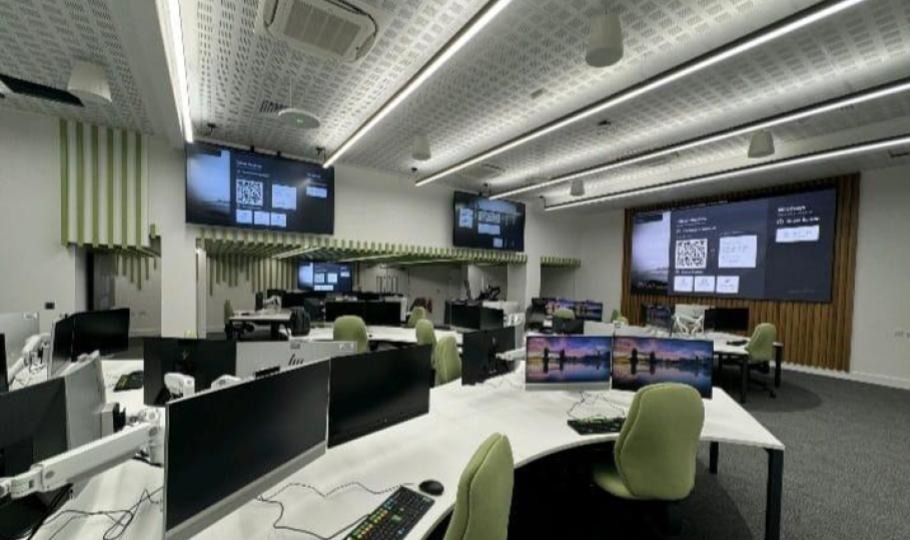
A high-reliable multi-node connectivity framework has been implemented to unify firefighting equipment with a centralized command and control system, ensuring real-time situational awareness and operational coordination. This infrastructure enables real-time Incident Impact Mapping, a critical capability that models and analyzes the evolving consequences of fire incidents across multiple zones and assets.
By capturing live telemetry, environmental conditions, and alarm data, the system provides dynamic assessments of threat propagation, structural impact, and risk concentration areas. These insights are continuously fed to the District Disaster Management Control Center (DMCC), empowering authorities to make data-driven decisions for resource mobilization, threat mitigation, and inter-agency coordination during emergencies.
Engineered to comply with national & international fire safety codes and regional disaster response protocols, the solution is fully scalable and designed for integration with approved fire detection technologies. For engineering teams, this translates to reduced system fragmentation, enhanced interoperability, and streamlined commissioning. For government stakeholders, it ensures enforceable compliance, improved public safety outcomes, and the potential for revenue generation through lifecycle upgrades aligned with evolving industrial standards.

The Fire Station Dashboard (FSD) will serve as the centralized integration hub for all operational subsystems, orchestrating both internal station activities and field-level emergency response with optimal efficiency and precision. Each asset connected to the fire station—ranging from detection devices to response units—will be uniquely identified and networked through the FSD, enabling incident commanders to access real-time intelligence and leverage AI-driven decision support and communication tools.
Engineered in-house, the FSD will incorporate advanced technologies including artificial intelligence and predictive analytics, aligning with the evolving needs of next-generation smart fire stations. The system will be delivered as a web-accessible platform, accompanied by secure, responsive mobile applications for Android and iOS, ensuring uninterrupted access for authorized personnel across all operational contexts.

Using Geo-Mapping & local data pooling from our smart Fire Brigade Interface Panels, we achieve:
- Automated Fire Incident Response
- Assessing the validity of the signal/alarm
- Rating fire alert Occurrences & periodicity
- Geographical Data analytics using Satellite
- Predictive Analytics with data mapping & incident impact mapping
The Smart Alarm Receiving Centre (SARC) will function as a highly advanced control node within the fire station, designed to monitor, verify, and manage incoming fire alarm signals with unmatched speed and precision. Serving as the central response coordination hub, the SARC ensures that all alarms are acted upon swiftly, enabling the fire brigade to initiate response protocols with maximum operational efficiency and minimal delay.
At the core of the SARC’s capability will be the Fire Station Dashboard (FSD)—a purpose-built software platform, either developed in-house or sourced to meet performance benchmarks. This dashboard will empower incident commanders and fire personnel with real-time situational awareness, decision support tools, and full operational oversight.
Complementing the FSD, the SARC will also host an Automated and AI-Controlled Inventory Management (ACIM) System and an Integrated Building Management System (IBMS). Together, these systems provide end-to-end transparency, logistical intelligence, and centralized control over fire station operations, resources, and infrastructure.
As part of the project scope, all necessary communication hardware, electronic systems, and peripheral devices required to fully establish the SARC will be included in the deliverables, ensuring a ready-to-deploy, mission-critical solution for modern fire response management.

